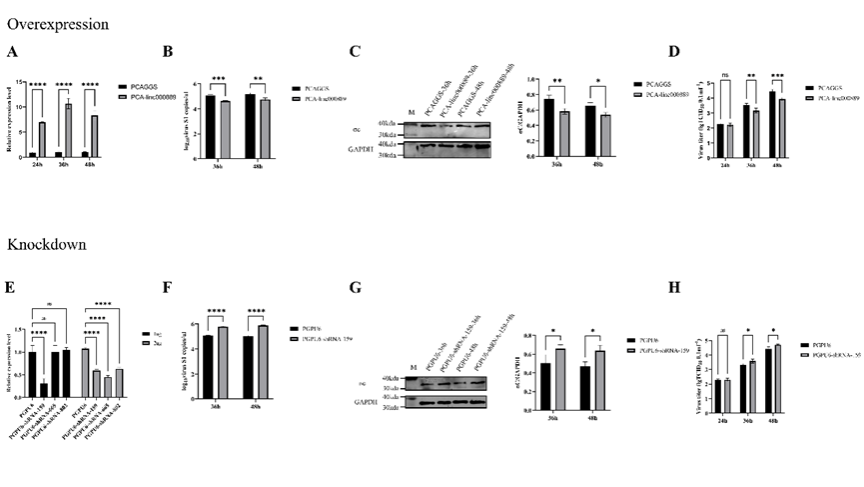Avian reovirus (ARV), a double-stranded RNA virus, is a major pathogen causing immunosuppression in poultry, leading to symptoms such as irregular bleeding and spleen necrosis in infected ducks. Since 2017, the morbidity and mortality rates of ARV infection have been increasing, posing a significant threat to the duck farming industry in China. To investigate the molecular mechanisms of ARV infection, researchers conducted transcriptome sequencing analysis on duck embryo fibroblasts 18 hours post-infection. The study revealed 3,818 up-regulated mRNAs, 4,573 down-regulated mRNAs, 472 up-regulated lncRNAs, and 345 down-regulated lncRNAs. qRT-PCR validation confirmed the reliability of the sequencing data, with key genes such as PARP9, TLR7, TRIM33, and ATG5 showing significant upregulation, suggesting their potential roles in ARV infection. A groundbreaking discovery of this study is the identification of a novel functional lncRNA, MSTRG.9284.1 (It was named linc000889), which effectively inhibits ARV replication at the transcriptional, translational levels and viral titer. This finding provides new insights into the mechanisms of ARV infection and may contribute to the development of new prevention and treatment strategies. The research, titled “Comprehensive analysis of lncRNAs and mRNAs revealed potential participants in the process of avian reovirus infection,” was published in Frontiers in Microbiology on February, 2025 (DOI: 10.3389/fmicb.2025.1539903).


